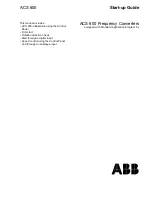
H0 Sound Decoder MX640 Page 19
Distance controlled stopping – Constant stopping distance
When this feature is selected with CV #140 (= 1, 2, 3, 11, 12, 13) it keeps the stopping distance as
close as possible to the one defined in CV #141, independent of the speed when entering the stop
section.
This method is especially suitable in connection with automated stops in front of a red signal with
the help of the
ZIMO signal controlled speed influence
or the
asymmetrical DCC-signal
(see
above). CV #140 is set for this purpose to 1 or 11 (see below for details).
Although of lesser practical value, the distance controlled stopping can also be activated directly by
the cab or computer when the speed is set to 0 (by programming CV #140 with appropriate values
of 2, 3, 12 or 13).
Sp
ee
d
Distance
Ente ri ng the stop secti on.
Desired stop poi nt
Decele ra tion sta rts a t ful l spee d
Decele ra tion sta rts a t less than ful l spe ed,
with “consta nt stopp ing distan ce
train stops at desired poin t by automatically re ducing the deceleration
vaul es inspi te of immediately started stoppi ng sequ ence.
” pr ogr ammed as CV # 140 = 11 ,12,13
-
Th e same with di sa bled constant stoppi ng d istance,
train stops to early.
Sp
ee
d
Distance
Ente ri ng the stop secti on.
(Or speed re gulator turned to stop)
Desired stop poi nt
Decele ra tion sta rts a t ful l spee d
Decele ra tion sta rts a t less than ful l spe ed,
with “consta nt stopp ing distan ce
- train stops at desired poi nt by au tomatically delayin g start of braking
follo wed b y “no rmal ” progression.
” pr ogr ammed as CV # 140 = 1, 2, 3
Th e same with di sa bled constant stoppi ng d istance,
train stops to early.
The distance controlled stopping can take place in two possible ways; see diagram above:
The first
is the
recommended method (CV #140 = 1, etc.),
where the train entering at less than full speed
continues at first at the same speed before it starts braking at a “normal” deceleration rate (same
rate as would be applied at full speed).
In the second method (CV #140 = 11, etc.), the train immediately starts with the braking procedure,
which may lead to an un-prototypical behavior. It may however be useful to use this method if used
together with decoders from other manufacturers that do not have this capability in order to harmo-
nize the brake sequences.
Also, the second method may be the preferred method if distance controlled stopping is used
manually (CV #140 = 2 or 12), so that the train reacts immediately to speed changes.
“Distance controlled stopping“, when activated, is exclusively applied to decelerations leading to a full stop. Re-
ductions in speed or acceleration events are not affected by this (still handled by CV #4 etc.).
The traveled distance is constantly being recalculated in order to get as close as possible to the de-
sired stop point. The deceleration rate within distance controlled stopping is always applied expo-
nentially, that is the deceleration rate is high in the top speed range followed by gentle braking until
the train comes to a full stop; which is
not
controlled by CV #122! The application of CV #121 for
exponential acceleration however remains unchanged.
Automated uncoupling procedure;
also see “connecting an electric coupler” in chapter 7:
As described in chapter 7, the control of an electric coupler (System Krois) is defined by CV’s #127,
128 etc. (function output effects) and CV #115 (timing).
With the help of CV #116 the decoder can be programmed so that the uncoupling loco automati-
cally moves away from the adjoining coupler without moving the speed regulator (which is some-
times inconvenient because the uncoupler key needs to be pressed at the same time).
The tens digit in CV #116 defines
how long (0.1 to 5 sec)
the loco should move away from the ad-
joining coupler, the ones digit defines
how fast (internal speed step 4 to 36)
it should move away,
see CV table. The momentum used during this acceleration/deceleration event is governed as
usual by the relevant CV’s (#3, #4 etc.). The hundreds digit of CV #116 causes the loco to auto-
matically
push against the adjoining coupler before
the uncoupling process starts in order to re-
lieve coupler tension (otherwise the couplers can’t open).
Other hints:
- The procedure is activated if the tens digit in CV #166 is other than 0; if desired (and CV #116 >
100), the loco pushes first automatically against the coupler in the opposite direction!
- The procedure (acceleration) takes place at the moment the coupler is activated, although only if
the loco is at rest at the time of coupler activation (speed regulator in 0 position). If the loco is still
moving, the procedure starts as soon as the loco comes to a complete halt provided the button for
this function is still being activated.
- The procedure ends when the function is turned off (by releasing the key if in momentary mode or
by pressing the key again if in latched mode), or when the programmed time limits have been
reached (CV #115 for the coupler and CV #116 for the loco detachment phase).
- Moving the speed slider during an automated uncoupling procedure stops the process immedi-
ately.
- The driving direction during coupler detachment is always according to the cab setting; directional
settings in the “Effects” definition for uncoupling (Bits 0 and 1 of CV #127, CV #128 etc.) will not be
applied.
















































